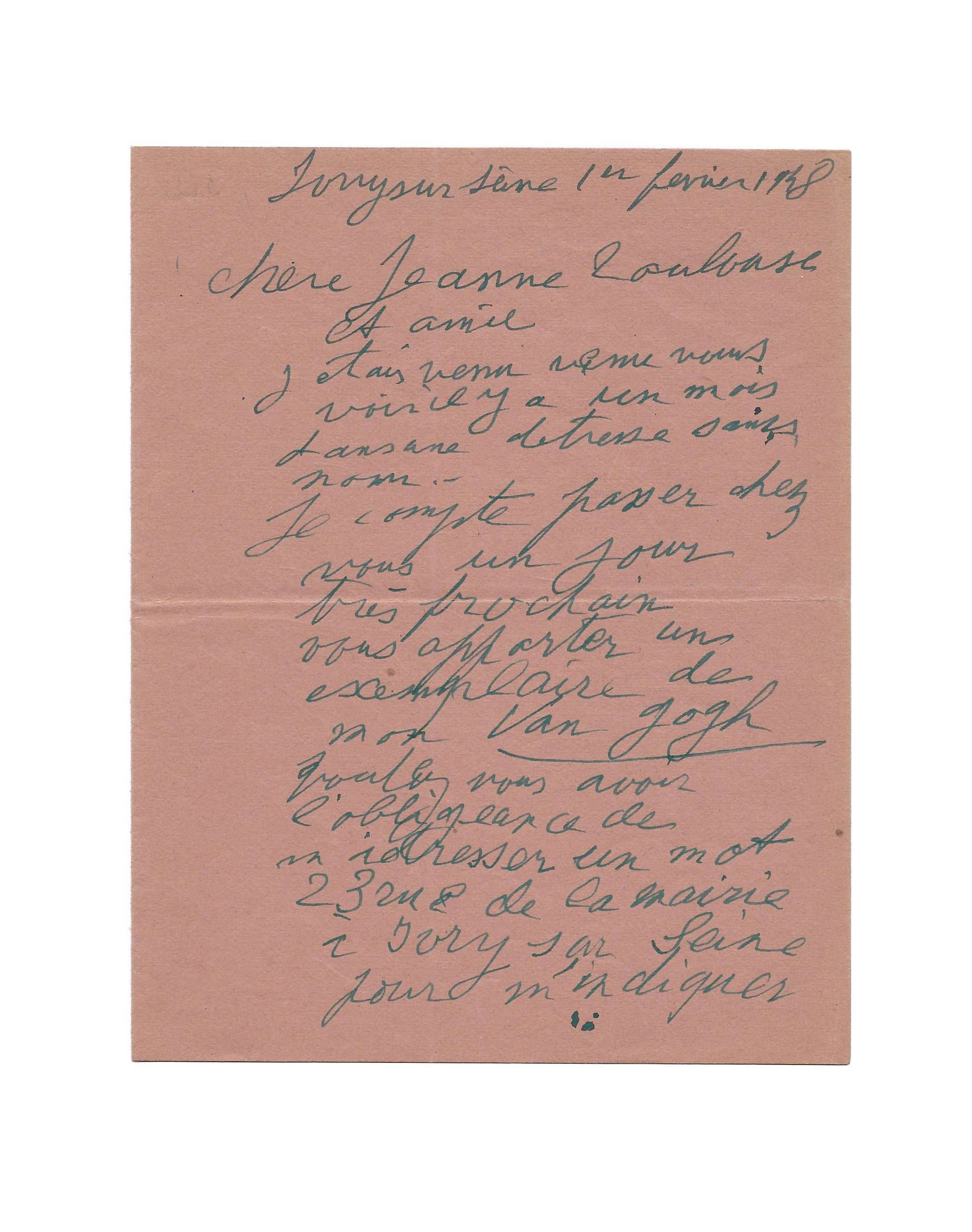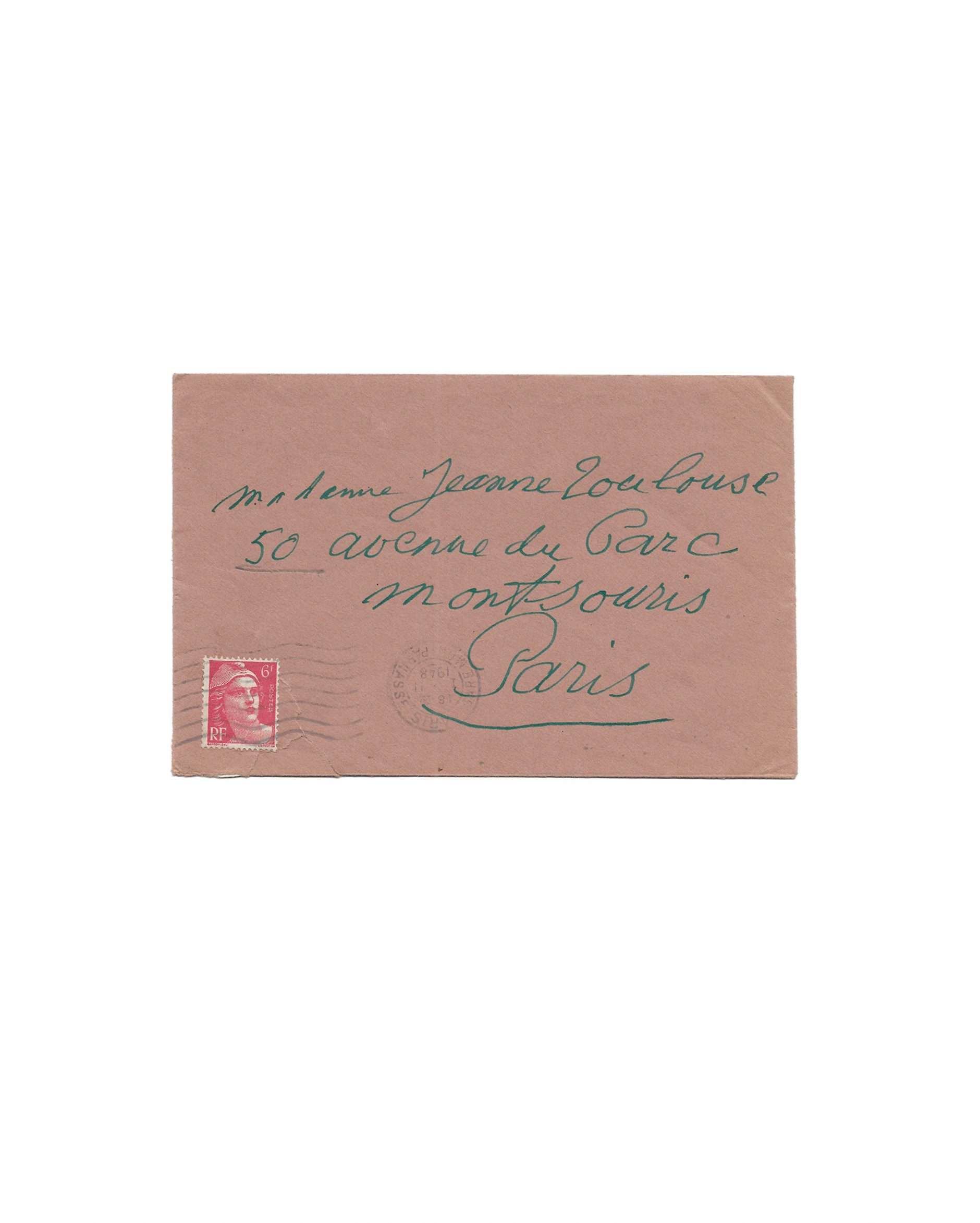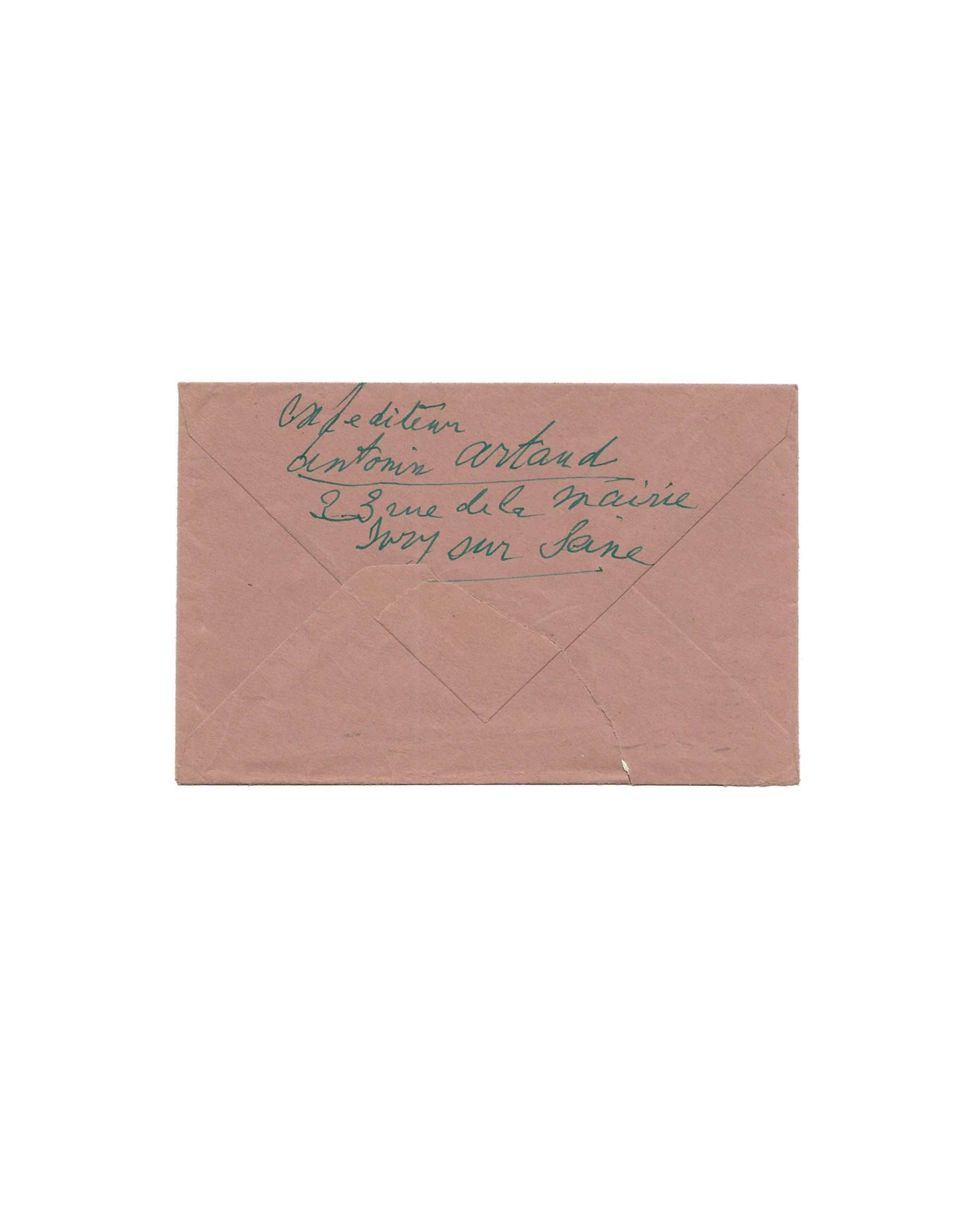ARTAUD, Antonin (1896-1948)
Autograph letter signed « Antonin Artaud » to Jeanne Toulouse
Ivry-sur-Seine, 1st February 1948, 2 p. in-8vo with envelope
« I plan to come to your house one day very soon to bring you a copy of my Van Gogh »
Fact sheet
ARTAUD, Antonin (1896-1948)
Autograph letter signed « Antonin Artaud » to Jeanne Toulouse
Ivry-sur-Seine, 1st February 1948, 2 p. in-8vo with envelope
One of Artaud’s last letters and evoking Van Gogh le suicidé de la société
« Chère Jeanne Toulouse et amie
J’étais venu venu [sic] vous voir il y a un mois dans une détresse sans nom.
Je compte passer chez vous un jour très prochain vous apporter un exemplaire de mon Van Gogh
Voulez vous avoir l’obligeance de m’adresser un mot 23 rue de la mairie à Ivry sur Seine pour m’indiquer quel jour je pourrai passer vous voir
dans l’attente de ce petit mot je vous prie de me croire cordialement et affectueusement vôtre
Antonin Artaud
23 rue de la mairie
Ivry sur seine »
Thirty years before this letter, on the advice of Dr. Dardel, Antoine Roi Artaud, father of the writer and poet, came into contact with Edouard Toulouse, psychiatrist then director of the asylum of Villejuif. The latter welcomes Artaud to his own home and “understands[end], seeing [him] that he [has] before him a quite exceptional being, of this race which gives Baudelaire, Nerval, Nietzsche.”, in the words of Jeanne Toulouse, wife of Edouard Toulouse, of whom Artaud has also made a portrait.
This letter was written a month before the death of Artaud, then ravaged by drug addiction. Its nervous spelling and sometimes approximate punctuation testify to the physical and psychological damage of drugs.
The “Van Gogh” that Artaud mentions is his poetic essay Van Gogh, le suicidedé de la société (1947), published on the occasion of an exhibition dedicated to the painter, rewarded with the Sainte-Beuve prize the following month. More than a portrait of the painter, breathtaking of passion and violence, we can read in this prose a projection of Artaud himself. Indeed, to enlarge the features, he takes the side of madness as a social construction intended to exclude those who attack institutions. Thus he says about Nerval, a writer who also bore the brunt of this rejection, that he “was not crazy, but [he] was accused of being crazy in order to discredit certain crucial revelations he was about to make.” Van Gogh, Artaud under the guise of the painter, but also Nerval, Nietzsche, Sade – all three mentioned in the essay – share the ethos of the tortured handed over to psychiatry.
It emanates from this essay that creation can be perceived as a Faustian pact, in which “[the artist] has never written or painted, sculpted, modeled, constructed, invented, only to get out of hell.” The hell of addiction, the hell of instituted psychiatry from which Artaud emerges through writing and van Gogh through painting.





